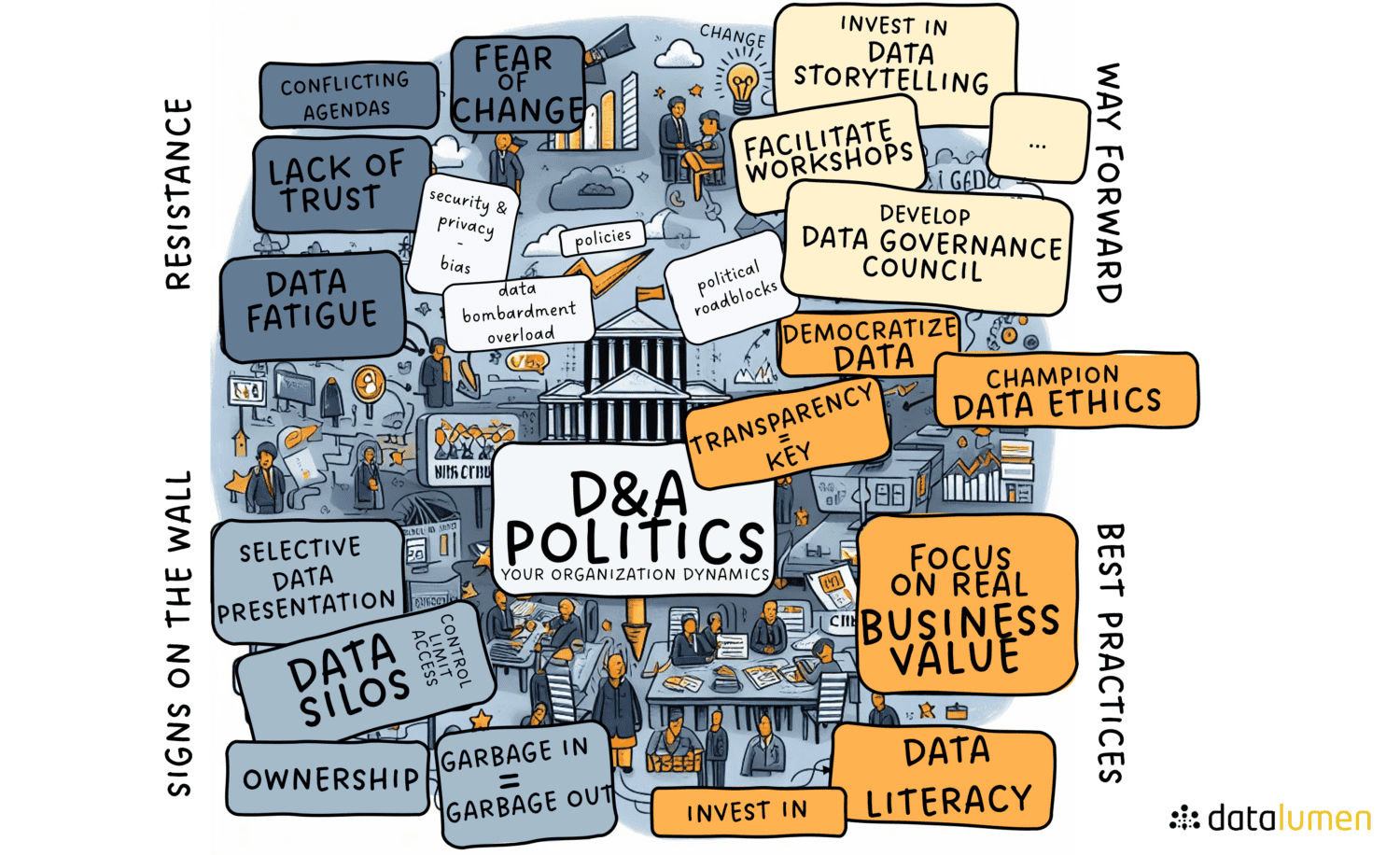D&A POLITICS: UNVEILING YOUR ORGANIZATION DYNAMICS
Data and Analytics (D&A) hold immense potential. It comes with the promise of efficiency, optimization, and a data-driven future. Yet, beneath the shiny surface can hide a complex web of somehow political nuances. This article delves into the unspoken resistance within organizations towards becoming more data-driven, explores common political issues surrounding D&A, and offers some best practices to navigate these challenges.
The Disconnect: What Is Told vs. What Is Done
Organizations often encourage the adoption of D&A, yet resistance lingers. This resistance can be subtle: missed deadlines for data collection, reluctance to share crucial information, or a lack of enthusiasm for data-driven decision-making.
Why the Resistance? Unveiling the Political Landscape
Several factors can contribute to these political issues:
- Fear of Change: Shifting from intuition-based decisions to data-driven ones can be unnerving. It challenges established power dynamics and may expose biases in existing processes.
- Data Fatigue: Constant data bombardment can lead to information overload and decision paralysis.
- Lack of Trust: Concerns about data privacy, security breaches, and algorithmic bias can create a climate of distrust.
- Conflicting Agendas: Different departments might prioritize different metrics, leading to conflicting goals and hindering a unified data strategy.
Signs On the Wall: Identifying Political Issues
Data can itself become a poweful and political tool. Watch out for some of these red flags:
- Selective Data Presentation: Highlighting data that supports pre-determined conclusions while downplaying contradictory evidence.
- Data Silos and Ownership: Departments hoarding data to maintain control or limit access for others.
- “Garbage In, Garbage Out” Syndrome: Poor data quality leading to unreliable analysis and skewed results.
Navigating the Maze: Best Practices for Overcoming Political Hurdles
Building a successful D&A environment requires addressing these political realities. Here are some best practices:
- Transparency is Key: Be upfront about data collection, usage, and potential risks. Foster open communication and address concerns proactively.
- Democratize Data: Make data accessible to relevant stakeholders across departments. Empower informed decision-making at all levels.
- Focus on Business Value: Frame D&A initiatives within the context of solving real business problems and achieving tangible benefits.
- Invest in Data Literacy: Train employees on data interpretation and analysis skills to build data fluency and trust.
- Champion Data Ethics: Develop clear data governance policies that prioritize privacy, security, and fairness.
Moving Forward: A Call to Action
Embrace the political dimension of D&A. It’s not just about the data itself; it’s about the people involved and their perspectives. By acknowledging the human element within data strategies, organizations can create an environment where data empowers rather than divides.
Start Here:
- Facilitate workshops: Foster open discussions to understand concerns and expectations surrounding D&A.
- Develop a data governance council: Create a cross-functional team to champion ethical data practices and address political roadblocks.
- Invest in data storytelling: Make data analysis engaging and relatable by translating insights into clear, actionable narratives.
Conclusion
D&A is powerful, but the true potential can only be unlocked by acknowledging the underlying political dynamics of your organization. By fostering open communication, addressing concerns, and building trust around data, organizations can navigate the political landscape and harness the true power of D&A to make informed decisions and achieve long-term success.
